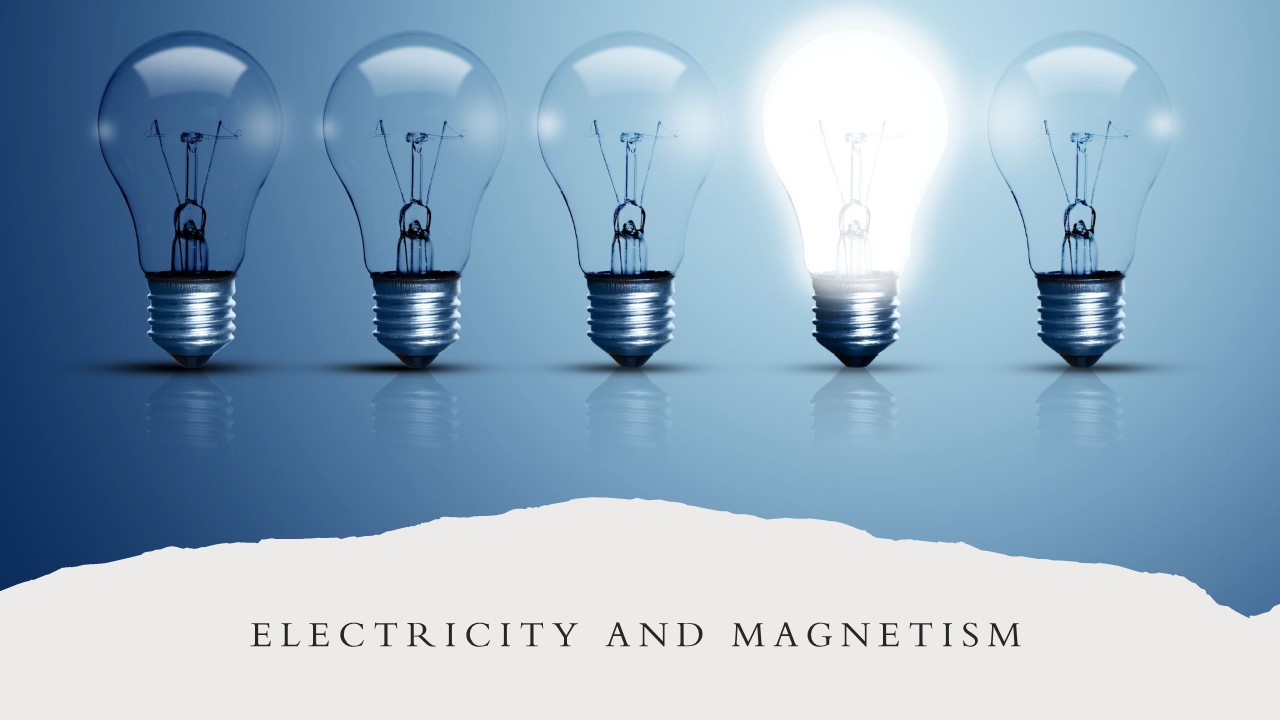STD X – ELECTRICITY AND MAGNETISM – EINSTEIN

About Course
ELECTRICITY
Concept of Current, Potential, Potential Difference and Resistance Ohms
The movement of electric charge is known as an electric current and its intensity is measured in amperes. Depending on the medium, electric charges are carried by:
Moving electrons in a wire
Ions in an electrolyte
Both ions and electrons in some substances like ionised gas
Electro-motive force, terminal voltage and internal resistance of a cell
A resistor is a passive two-terminal electrical component that implements electrical resistance as a circuit element.
Resistors in series
When resistors are set up in series,
The current flows in a single path, that is, the same current passes through each resistor.
The potential difference across any resistor is directly proportional to its resistance.
The potential difference across the entire circuit (V) is equal to the sum of potential differences across the individual resistor.
Resistors in Parallel
In a parallel connection, the starting ends of two resistors are joined to a point and the terminal ends of the two are combined and given connection to a source of electricity.
HOUSEHOLD CIRCUITS
Electrical power:
Electric power is the rate, per unit time, at which electrical energy is transferred by an electric circuit. The SI unit of power is the watt, one joule per second. Electric power is usually produced by electric generators, but can also be supplied by sources such as electric batteries.
Electrical energy
Electrical energy is the energy newly derived from electric potential energy or kinetic energy. Or it is the energy created by electrons moving through an electrical conductor. Electrical energy talks about energy which has been converted from electric potential energy. This energy is supplied by the combination of electric current and electric potential that is delivered by the circuit.
Household wiring system
Homes typically have several kinds of home wiring, including Electrical wiring for lighting and power distribution, permanently installed and portable appliances, telephone, heating or ventilation system control, and increasingly for home theatre and computer networks.
Do you know how electricity reaches your homes? Electricity from power station comes with two wires, live wire and neutral wire. A household circuit consists of three wires: live wire (red in colour ), a neutral wire (black), earth wire (green ).Earth wire is used for safety purposes, any current leaked into appliances flows harmlessly to earth.
Some essential components of house wiring system
Homes typically have several kinds of home wiring, including Electrical wiring for lighting and power distribution, permanently installed and portable appliances, telephone, heating or ventilation system control, and increasingly for home theatre and computer networks.
Magnetic Effect of Electric Current
If you pass an electric current through a straight conductor, it will behave exactly like a magnet. This temporary magnet is called an electromagnet. Electromagnets,
are formed due to the magnetic effect of the electric current, and
last as long as the current flows in the conductor.
You can create a simple electromagnet by winding a coil of wire around an iron bar and passing current through this wire.
Course Content
CURRENT ELECTRICITY – 06 – MAY – INTRODUCTION TO CURRENT, POTENTIAL DIFFERENCE, RESISTANCE AND OHMS LAW
-
17:26
-
02:41
-
01:47
-
05:00
-
04:08
-
05:00
-
06:00
-
01:15
-
01:15
-
06:00
-
01:33
-
05:35
CURRENT ELECTRICITY -14 MAY – E M F OF A CELL , RSISTANCE AND CONDUCTANCE
CURRENT ELECTRICITY – 20 MAY – E.M.F. POWER, ENERGY AND NUMERICALS
CURRENT ELECTRICITY – 03 SEPTEMBER – REVISION CLASS – NUMERICALS
CURRENT ELECTRICITY – ONLINE CLASS – 11 OCTOBER 2023
HOUSEHOLD CIRCUITS – 23 MAY – TRANSMISSION OF ELECTRICITY, BASIC COMPONENTS
HOUSEHOLD CIRCUITS – 25 – MAY – COMPONENTS – SWITCH – DUAL SWITCH SYSTEM, FUSE, EARTHING SOCKET
ELECTROMAGNETISM
ELECTRICITY – ONLINE CLASS – 25 OCT 2023
PAPER DISCUSSION – ONLINE CLASS – 07 NOV 2023
Student Ratings & Reviews

No Review Yet

